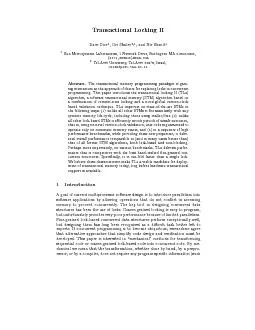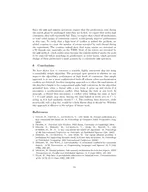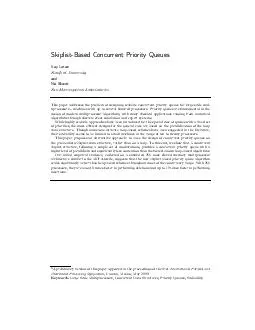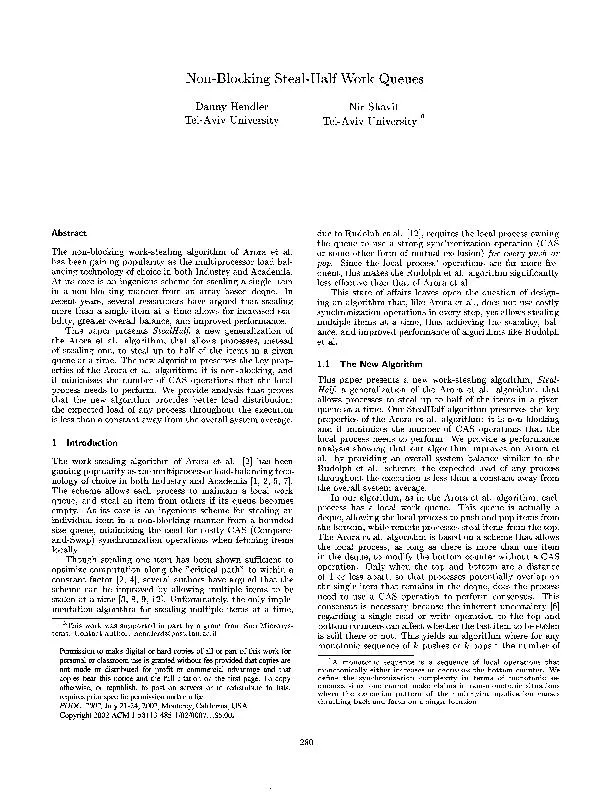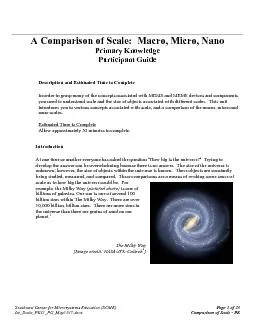PDF-Transactional Locking II Dave Dice Ori Shalev and Nir Shavit Sun Microsystems Laboratories
Author : min-jolicoeur | Published Date : 2014-12-19
com TelAviv University TelAviv 69978 Israel orishposttauacil Abstract The transactional memory programming paradigm is gain ing momentum as the approach of choice
Presentation Embed Code
Download Presentation
Download Presentation The PPT/PDF document "Transactional Locking II Dave Dice Ori ..." is the property of its rightful owner. Permission is granted to download and print the materials on this website for personal, non-commercial use only, and to display it on your personal computer provided you do not modify the materials and that you retain all copyright notices contained in the materials. By downloading content from our website, you accept the terms of this agreement.
Transactional Locking II Dave Dice Ori Shalev and Nir Shavit Sun Microsystems Laboratories: Transcript
Download Rules Of Document
"Transactional Locking II Dave Dice Ori Shalev and Nir Shavit Sun Microsystems Laboratories"The content belongs to its owner. You may download and print it for personal use, without modification, and keep all copyright notices. By downloading, you agree to these terms.
Related Documents

